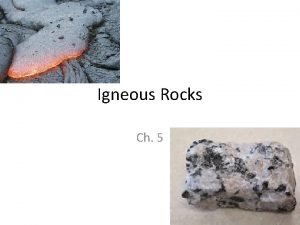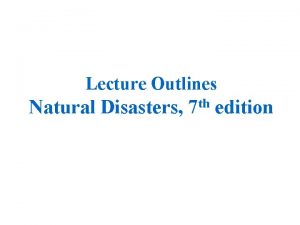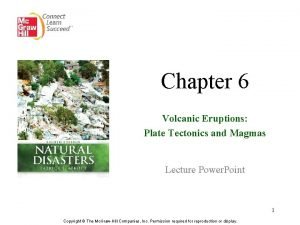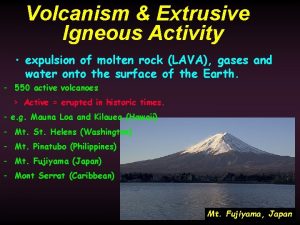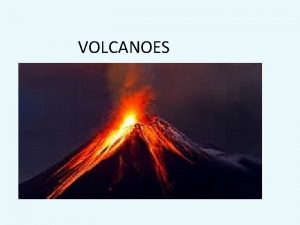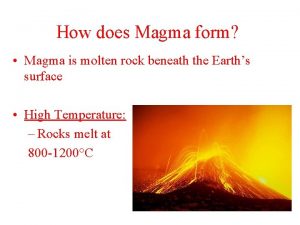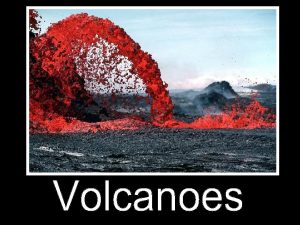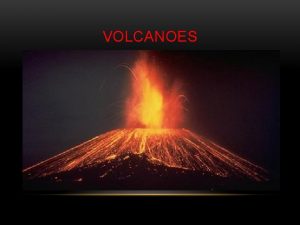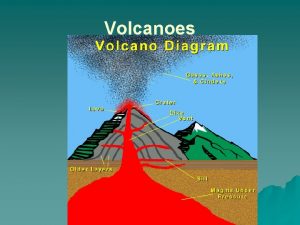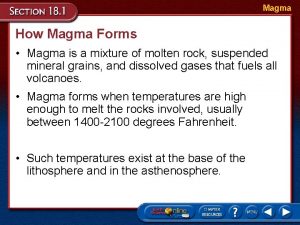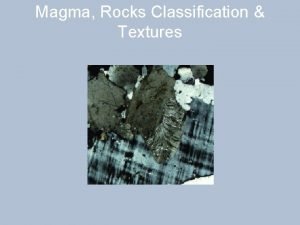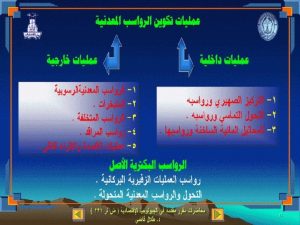Volcanology The Study of Volcanoes Magma molten rock










- Slides: 10


Volcanology: The Study of Volcanoes • Magma (molten rock) forms at plate boundaries, where friction between the plates can create intense heat and pressure.

• Magmas contain dissolved gases (water vapour, carbon dioxide) • As magma reaches the surface, dissolved gas come out as bubbles of gas. • Bubbles expand explode…therefore… LOTS OF GAS = MORE EXPLOSIVE ERUPTIONS

Volcano Hazards 1. Ash • Gritty sand-sized particles blasted from erupting volcano • Can reach very high altitudes and block sunlight, causing world temperatures to drop. • Can destroy crops and, buildings, clog rivers, damage machines.

2. Lava • Molten rock may flow over large areas, destroying everything in its path.

3. Lahar • Flow of mud, water, ash and debris that can result when snow-covered volcanoes erupt.

1. Composite volcanoes (formed by Convergent boundaries) • As ocean plate sinks beneath the continental (or less dense oceanic) plate, increasing heat melts the rock, forming magma. • Magma is lighter than the surrounding solid rock, so it rises up through the edge of the continental plate to form a volcano. • Tall cone shape results from layers of ash and lava building up over time • Magma is usually very thick and traps gas producing explosive eruptions • Mt. St. Helen’s, Mt. Baker, Mt. Garibaldi

2. Shield volcanoes (found at Hot Spots ) • Not at plate boundaries • Magma much thinner than in composite volcanoes • The thinner magma flows more easily resulting in fewer, less explosive eruptions and more gentle slope (low wide cone). • As the plate moves, it carries the hot spot with it, so that chains of volcanic islands are formed • Largest volcanoes • i. e. , Hawaii

3. Rift eruptions (formed by Divergent boundaries): • Magma flows through long cracks in lithosphere at mid-ocean ridges; • Usually not very explosive • occasionally, volcanoes grow high enough to rise above the surface of the ocean and produce islands. • Eg. Iceland

Pacific Ring of Fire • Region surrounding the Pacific Ocean, where many volcanoes and earthquake activity. • total of 452 volcanoes, and has 75% of the Earth's active and dormant volcanoes. • Mostly subduction zones
